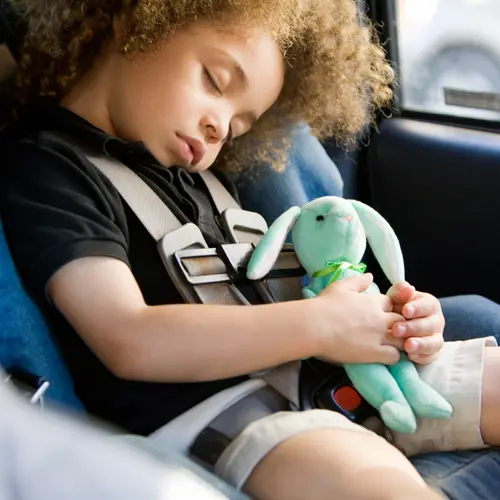Sensory bins let children learn through hands-on play. With just a few common household materials, you can make a toy that will keep your child entertained for hours and help them develop their motor, social, literacy, math, and science skills.
What Is a Sensory Bin?
A sensory bin is a shallow container that combines filler material and various small odds and ends. You fill the bin with a filler material such as sand or rice, then add items from around the house such as spoons or measuring cups. Let your child explore the items and have fun playing.
You can encourage them by demonstrating how to scoop and pour and talking to them about what they're doing. You'll encourage their literacy skills by talking to them while they're playing and hone their math skills by letting them measure and pour.
Sensory Bin Benefits
Sensory bins support your child's development in several ways:
Improve fine motor skills. Digging, pouring, stirring, and scooping can strengthen your child's hand muscles and improve their fine motor skills. Include oversized tweezers, spoons, and funnels to encourage your child to practice the type of grasping skills they'll need to feed themselves and write.
Sensory exploration. Sensory bins provide opportunities for your child to explore multiple senses, including sight, sound, touch, and smell. They'll enjoy running their hands through the filler material and watching what happens as they pour it out. Many materials you can put in a sensory bin provide a wonderful tactile sensation.
Intellectual development. Although it might seem like they're just playing, your child is learning a lot of cognitive skills when they're using a sensory bin. You can ask them to sort items by size or color. Meanwhile, using measuring cups can help them understand volume. Putting plastic letters or numbers in their sensory bin and discussing them can help develop literacy concepts.
Calming experience. Playing with a sensory bin is a very relaxing and calming experience. If your child is getting overstimulated, bringing out a sensory bin may help head off a meltdown. You can encourage independent play with sensory bins so you can have a little quiet time, too.
Language development. Sensory bins provide many opportunities for you to talk to your child and encourage their language development. You can discuss concepts such as more and less, talk about hidden objects, and ask your child to tell you what they're doing.
Encourage cooperative play. Using a sensory bin with friends or family members will encourage your child to play cooperatively. They'll learn concepts such as taking turns, sharing, and working together. Playing with others will help your child learn to communicate better.
What Ages Are Sensory Bins Good for?
Sensory bins are good for children over 18 months of age. Before they're 18 months old, sensory bins are not developmentally appropriate because the possible hazards outweigh the benefits.
Safety Tips for Using Sensory Bins
Toddlers and preschoolers should always be supervised when using sensory bins to discourage them from eating the materials. Here are some more safety tips for making sensory bins:
- Don't use items that pose a choking hazard, either as filler material or odds and ends.
- All sensory bin materials should be nontoxic.
- Use a tube to test if objects are a choking hazard, particularly if they're round or elliptical in shape.
- Don't use raw kidney beans, since swallowing as few as four or five can cause severe nausea, vomiting, and diarrhea.
- Don't use flour in your bin because it can be aspirated and affect breathing.
- Only use sterilized sand such as the type sold as play sand.
- Avoid using styrofoam peanuts since they are a choking hazard.
How to Make a Sensory Bin
As long as you follow the safety guidelines above, you're only limited by your imagination when it comes to making a sensory bin. Just make sure that the materials you use are age-appropriate: Avoid choking hazards if you have a younger child.
Here are some sensory bin ideas to get you started:
- Pick a seasonal theme for your sensory bin, such as a beach bin for summer or a snow bin for winter.
- Use cooked, cooled pasta as your filler material and a strainer and measuring cups for your odds and ends.
- Put a small toy in an ice tray and freeze it, then add it to a water bin on a hot day.
- Use cotton balls or pom poms for a fluffy sensory bin.
- Fill a bin with water beads or frozen water beads if it's hot outside.
- Put your bin in an area that's easy to clean up or take it outside.
- Fill a bin with shredded newspaper and hide plastic letters in it.
- Make a sensory bin that reinforces what your child is learning in school. Fill it with feathers if they're learning about birds.
- After you carve your pumpkin, use the guts to fill up a sensory bin
- Put nontoxic shaving cream in a bin and add a few drops of food coloring so your child can practice mixing colors.
- Mix cornstarch and water to give your child a fun chemistry lesson.
- Never force your child to touch the materials in a sensory bin if they don't want to. Instead, demonstrate how much fun it is by playing with it yourself.
- For some messy fun, fill a sensory bin with gelatin and cookie cutters.

